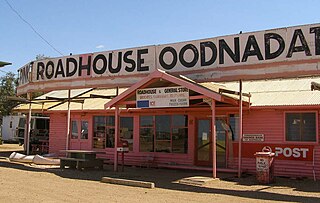
Oodnadatta is a small, remote outback town and locality in the Australian state of South Australia, located about 873 kilometres (542 mi) north of the state capital of Adelaide and 112 m above sea level.

Sir Walter Baldwin Spencer, commonly referred to as Baldwin Spencer, was a British-Australian evolutionary biologist, anthropologist and ethnologist. He is known for his fieldwork with Aboriginal peoples in Central Australia, contributions to the study of ethnography, and academic collaborations with Frank Gillen. Spencer introduced the study of zoology at the University of Melbourne and held the title of Emeritus Professor until his death in 1929.

Gould's mouse, also known as the Shark Bay mouse and djoongari in the Pintupi and Luritja languages, is a species of rodent in the murid family. Once ranging throughout Australia from Western Australia to New South Wales, its range has since been reduced to five islands off the coast of Western Australia.
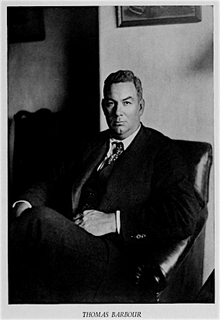
Thomas Barbour was an American herpetologist. From 1927 until 1946, he was director of the Harvard Museum of Comparative Zoology (MCZ) founded in 1859 by Louis Agassiz at Harvard University in Cambridge, Massachusetts.

Francis James Gillen, also known as Frank Gillen and F. J. Gillen, was an early Australian anthropologist and ethnologist. He is known for his work with W. Baldwin Spencer, including their seminal work The Native Tribes of Central Australia (1899). They both worked in central Australia, where Gillen was employed as a telegraph station master, with the Arrernte people and other Indigenous Australians.
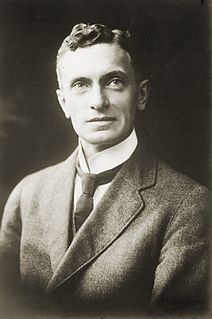
Herbert Basedow was an Australian anthropologist, geologist, politician, explorer and medical practitioner.
Charlotte Waters was a tiny settlement in the Northern Territory of Australia located close to the South Australian border, not far from Aputula. It was known for its telegraph station, the Charlotte Waters Telegraph Station, which became a hub for scientists travelling in central Australia in the late 19th and early 20th century. Aboriginal artist Erlikilyika, known to Europeans as Jim Kite, lived there. Only a ruin remains today.

The long-tailed hopping mouse is an extinct species of rodent in the family Muridae. It was found only in Australia. It is known from a handful of specimens, the last of which was collected in 1901 or possibly 1902. It is presumed to have become extinct within a few decades from then – possibly several decades in view of a skull fragment found in an owl pellet in 1977. The cause of extinction is unknown, but may be a variety of factors including predation and habitat alteration. Little is known of its biology other than that it dug burrows in stiff clay soils. It was less a pest to humans than other hopping mice, although it would eat raisins. The mouse was mainly gray in colour with small pink ears and big eyes with a long hairy pink tail about two inches longer than its own body. It was first described by John Gould on the basis of specimens sent to him from Australia.

Afghan cameleers in Australia, also known as "Afghans" or "Ghans", were camel drivers who worked in Outback Australia from the 1860s to the 1930s. Small groups of cameleers were shipped in and out of Australia at three-year intervals, to service the Australian inland pastoral industry by carting goods and transporting wool bales by camel trains. They were commonly referred to as "Afghans", even though a lot of them originated from the far western parts of British India, primarily Balochistan and the NWFP, which was inhabited by ethnic Pashtuns and Balochs, nonetheless many were from Afghanistan itself as well, in addition to that there were also some with origins in Egypt and Turkey. The majority of cameleers, including cameleers from British India, were Muslim, while a sizeable minority were Sikhs from the Punjab region. They set up camel-breeding stations and rest-house outposts, known as caravanserai, throughout inland Australia, creating a permanent link between the coastal cities and the remote cattle and sheep grazing stations until about the 1930s, when they were largely replaced by the automobile. They included members of the Pashtun, Baloch, and Sindhi ethnic groups from south-central Asia ; others from the Punjabi, Kashmir, and Rajasthan regions of the Indian subcontinent; as well as people from Egypt, Iraq, Syria, and Turkey. They provided vital support to exploration, communications and settlement in the arid interior of the country where the climate was too harsh for horses. They also played a major role in establishing Islam in Australia, building the country's first mosque at Marree in South Australia in 1861, the Central Adelaide Mosque, and several mosques in Western Australia.

Ochetellus flavipes, the spinifex ant, is a species of ant in the genus Ochetellus. Described by William Forsell Kirby in 1896, the species is endemic to Australia.

Camponotus aurocinctus is a species of ant in the genus Camponotus. The ant was described by Smith in 1858.
Illamurta Springs Conservation Reserve is a protected area in the Northern Territory of Australia in the locality of Ghan about 42 kilometres (26 mi) south of Hermannsburg and 140 kilometres (87 mi) west of Alice Springs. The southern foothills of the James Range and the permanent spring from which the reserve takes its name are found within the reserve.
Arrarbi, also known as Arrabi, Arabi Bey, Cowle Bob and Police Bob, was an Aboriginal tracker, police of the Matuntarre people of the region around Tempe Downs Station in the Northern Territory of Australia. He was a guide on the Horn Scientific Expedition to Central Australia, and police tracker and outlaw. He is notable for his many arrests.
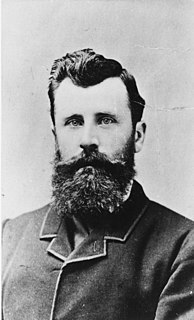
Charles George Alexander Winnecke was an Australian explorer and botanist best known for leading the Horn Expedition to Central Australia in 1894.

The Arabana, also known as the Ngarabana, are an Aboriginal Australian people of South Australia.
Charles Frost (1853?–1915) was an Australian author and collector of reptiles, frequently associated with the works of Arthur Henry Shakespeare Lucas.

Erlikilyika, known to Europeans by the name Jim Kite or Jim Kyte or Jim Kite Penangke, was an Aboriginal Australian sculptor, artist and anthropological interpreter. He was an Arrernte man, born into the Southern Arrernte or Pertame language group in Central Australia. He was the first Central Australian artist to be nationally recognised for his artistic talent, in particular his carvings of animals in soft stone, illustrations and sculptures, after an exhibition of his work was held in Adelaide, South Australia in 1913.
Patrick Michael Byrne (1856–1932), also known as Paddy or Pado, was an Australian telegraph operator, anthropologist and natural scientist who worked at the remote Charlotte Waters telegraph station in central Australia for 50 years. He was a keen self-taught scientist who collected specimens and corresponded extensively with biologist and anthropologist Walter Baldwin Spencer. He also worked with anthropologist Francis James Gillen at Charlotte Waters, and was a friend of and advocate for the local Arrernte people.
Saitis insectus is a species of spider in the genus Saitis and the family, Salticidae. It is found in central Australia.
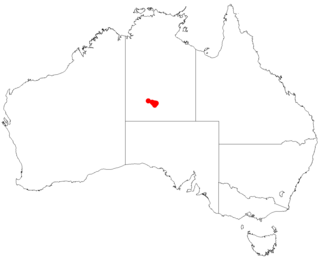
Prostanthera schultzii is a species of flowering plant in the family Lamiaceae and is endemic to the Northern Territory. It is a shrub with heart-shaped to round or paddle-shaped leaves and white flowers with purple spots and yellow patches on the lower lip.














